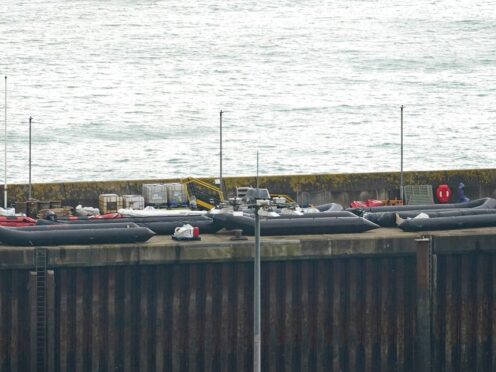
Almost as many Afghan nationals arrived in the UK having made the dangerous Channel crossing as through the Government’s legal routes in the year to March, the latest figures show.
A total of 5,662 Afghan nationals came to the UK having crossed the Channel in that period, plus 350 of what the Home Office described as inadequately documented air arrivals, making a total of 6,012 people.
Data also showed that some 758 lone Afghan children were recorded as applying for asylum having crossed the Channel – a figure described by a charity as showing they are being let down by a lack of options for family reunion.
Meanwhile, 6,042 Afghans were resettled in the same period under the schemes created by the department following the fall of Afghanistan to the Taliban in 2021.
A total of 1,854 of those came under the Afghan Citizens Resettlement Scheme (ACRS) – which is split into three pathways.
The number resettled under pathway one – for “vulnerable and at-risk” people who arrived in the UK during the evacuation programme in 2021 and those who were eligible but not able to board a flight at that time – was down 91% year-on-year from 434 in the year ending March 2023, to 40 in the year ending March 2024.
The Government has previously pledged to establish a route for families who ended up being split apart when some were evacuated initially and loved ones left behind.
Then-immigration minister Robert Jenrick said in October that a route related to pathway one would allow eligible individuals to refer one spouse or partner and dependent child for resettlement, and that the Government was aiming for referrals to that route in the first half of 2024 “if not sooner”.

Earlier this month a Home Office spokesperson said the department remains “on track to open the route for referrals in the first half of this year”.
The ACRS, which began in January 2022, prioritised people who had assisted UK efforts in Afghanistan as well as vulnerable people, including women and girls at risk, and members of minority groups at risk.
Those arriving under pathway two – for vulnerable refugees referred by the United Nations High Commissioner for Refugees (UNHCR) – rose to 623 in the year ending March 2024, from 40 the previous year.
Numbers settled under pathway three – for women and girls at risk and those who supported the UK and international community effort in Afghanistan – rose to 1,191 in the year ending March 2024, from 16 the previous year.
The Arap scheme, which launched in April 2021, is for Afghan citizens who worked for or with the UK Government in Afghanistan.
Arrivals under this scheme were up by a quarter to 4,188 in the year to March 2024.
Of the 2,762 unaccompanied children recorded applying for asylum in the UK having crossed the Channel in this period, Afghans were the most common nationality – totalling 758.
Dr Wanda Wyporska, chief executive officer at Safe Passage International, said children’s lives depend safe routes for separated families to reunite.
She said: “Sadly, it’s not surprising to see that so many Afghan children are having to take this dangerous journey alone.
“After all, Afghans resettled in the UK from evacuations when Kabul fell in 2021 are totally excluded from refugee family reunion.
“Appallingly, parents in the UK have no way to bring their sons and daughters to join them here, leaving children to take dangerous journeys instead.
“The unaccompanied children we work with are simply trying to reach what little family they have left.
“We urgently need safe routes to be opened for refugees, and for the family reunion rules to be fixed, as has been done before for those fleeing the war in Ukraine. Children’s lives depend on it.”
Denisa Delic, advocacy director at International Rescue Committee UK, said that until safe routes are expanded “people fleeing conflict in places like Afghanistan will be driven to make dangerous journeys in search of safety”.
She said: “The Government must scale up safe routes to ensure fewer people are forced to take dangerous journeys in the first place – resettlement schemes, a refugee visa and family reunion schemes are more effective and humane alternatives that would offer orderly routes to protection for refugees.”

Enjoy the convenience of having The Sunday Post delivered as a digital ePaper straight to your smartphone, tablet or computer.
Subscribe for only £5.49 a month and enjoy all the benefits of the printed paper as a digital replica.
Subscribe